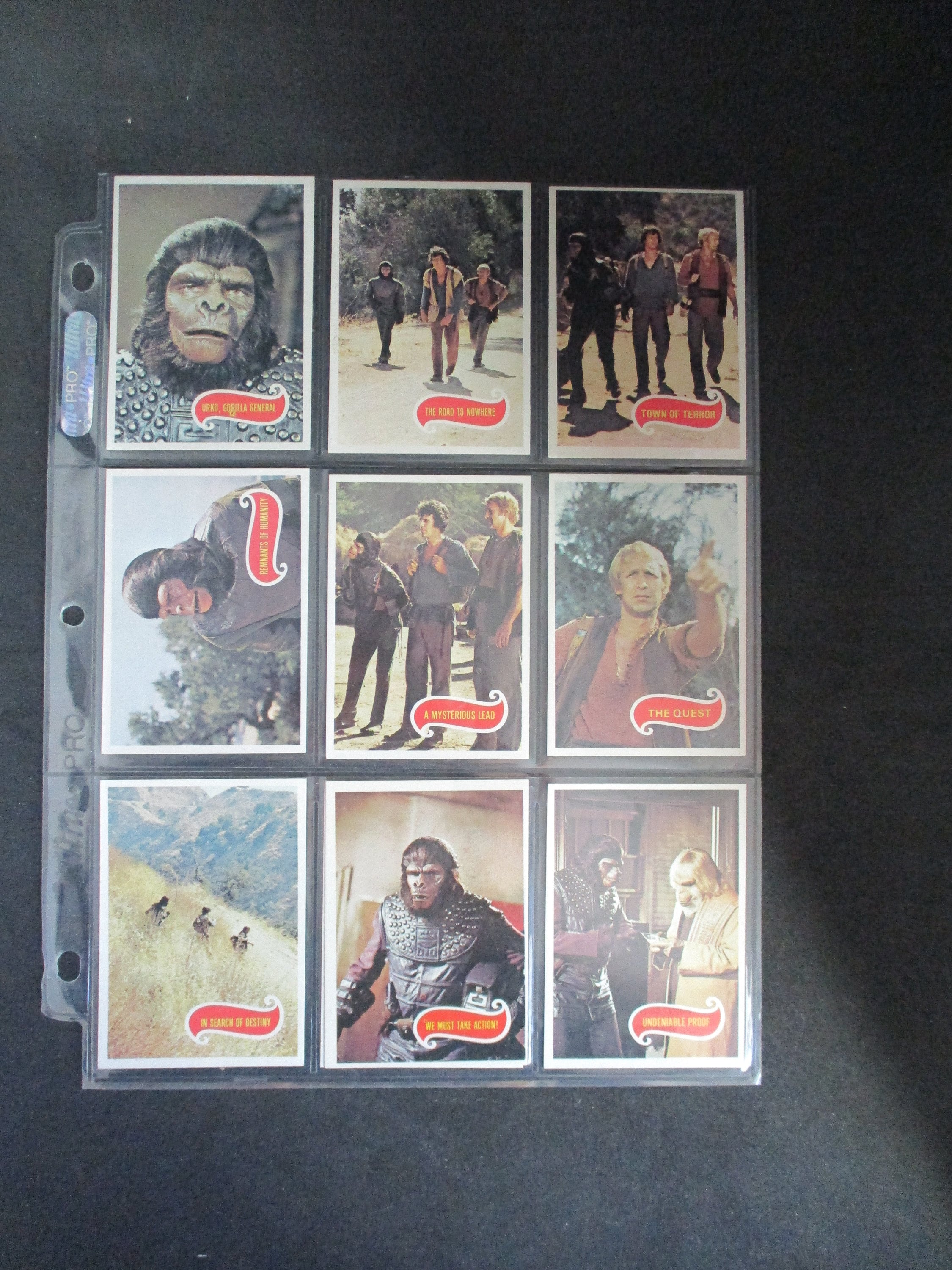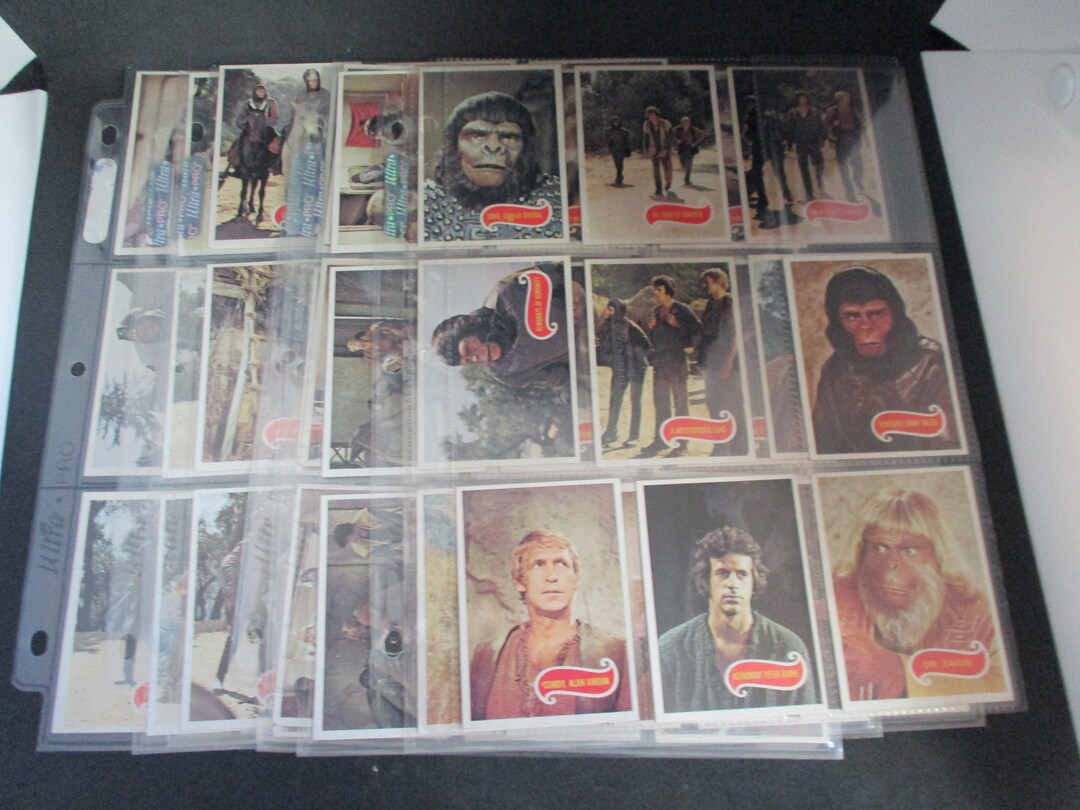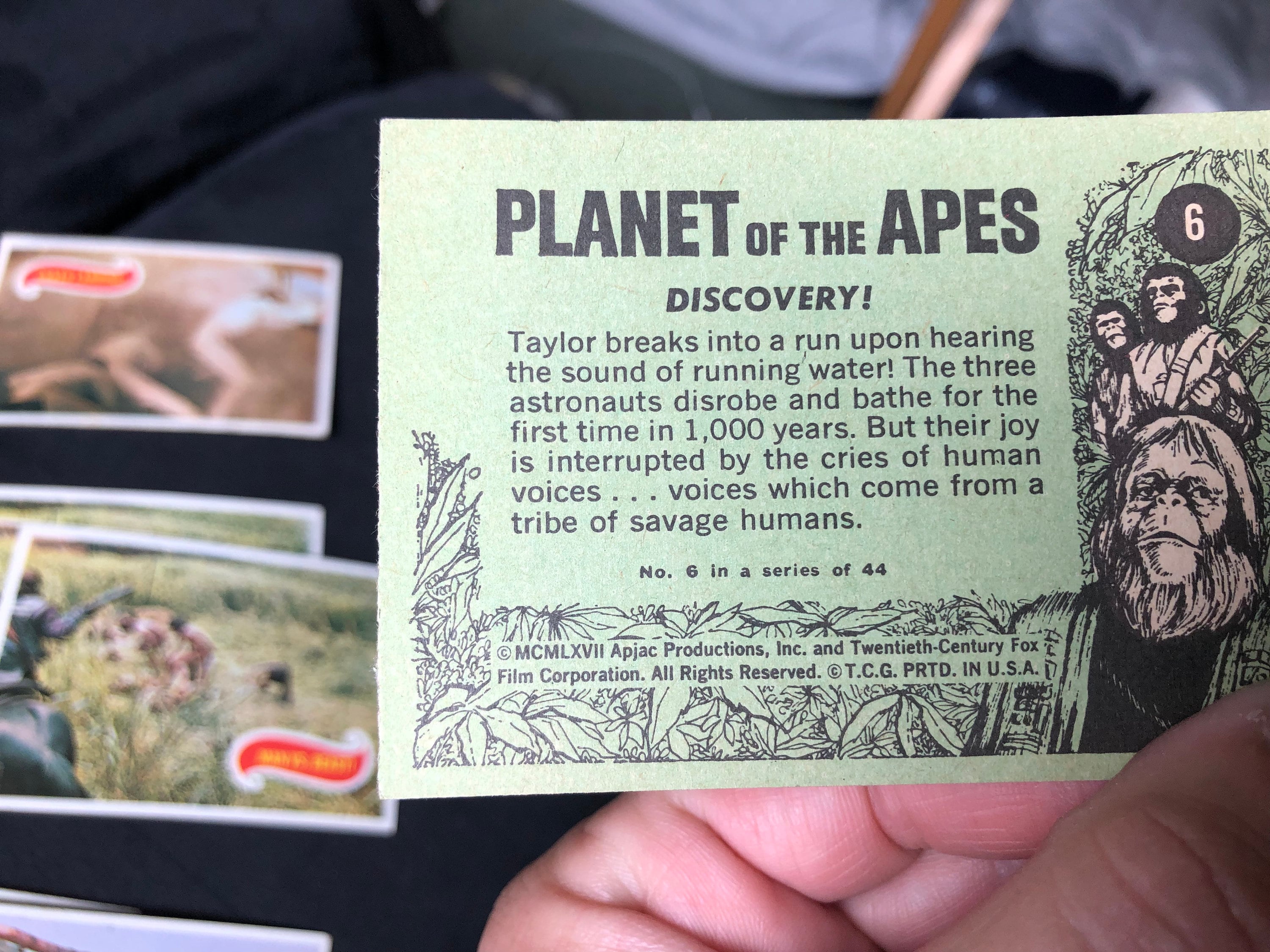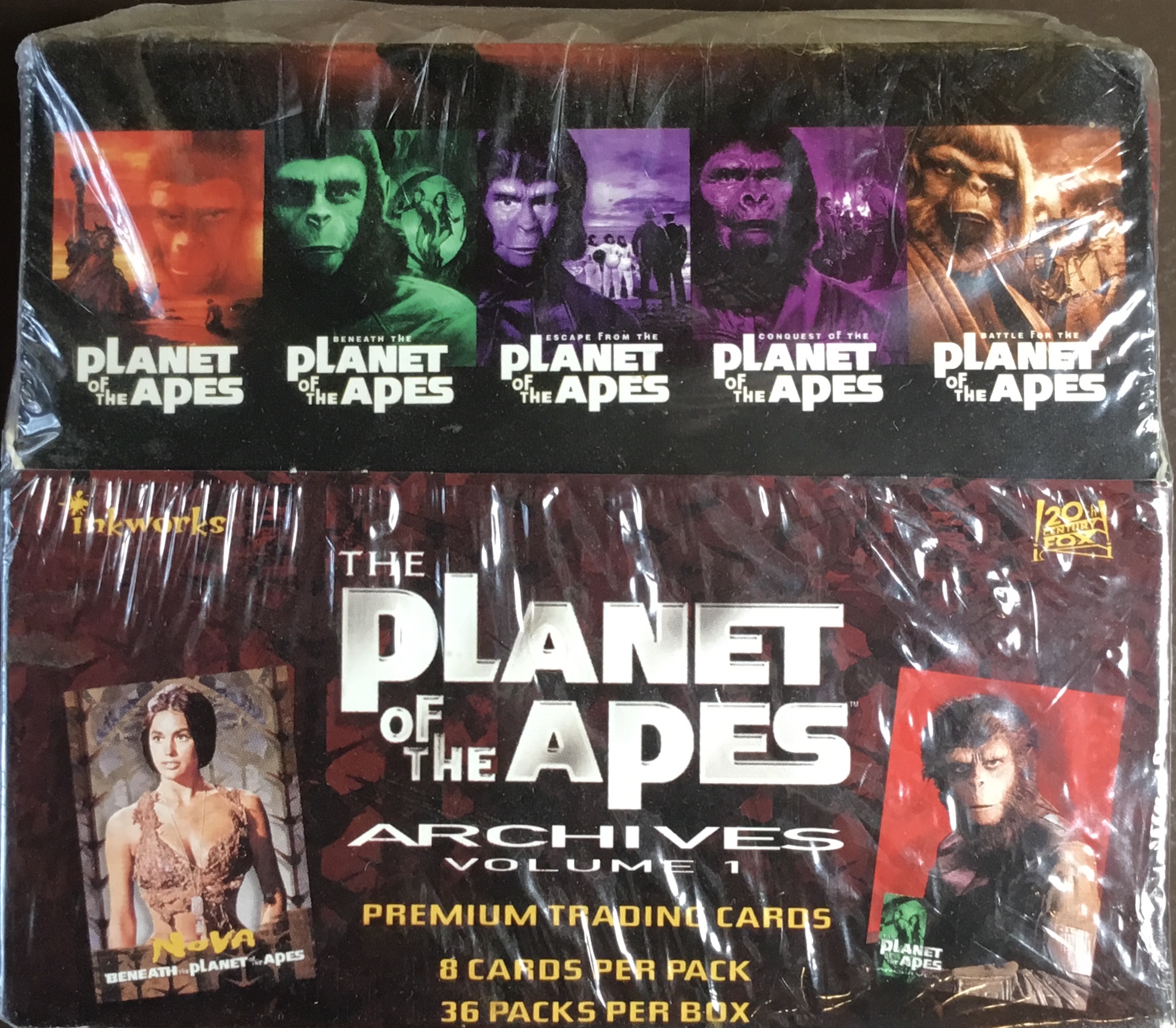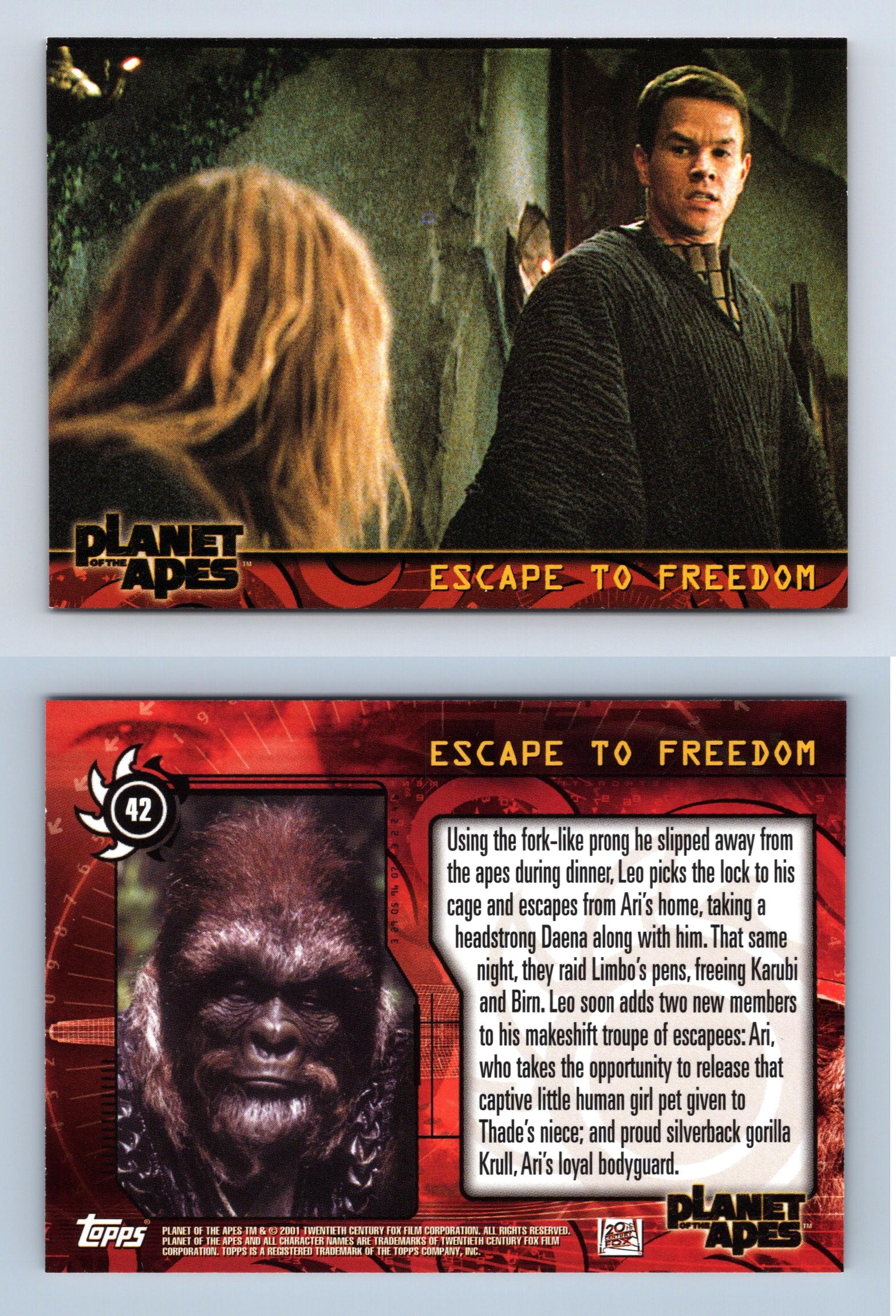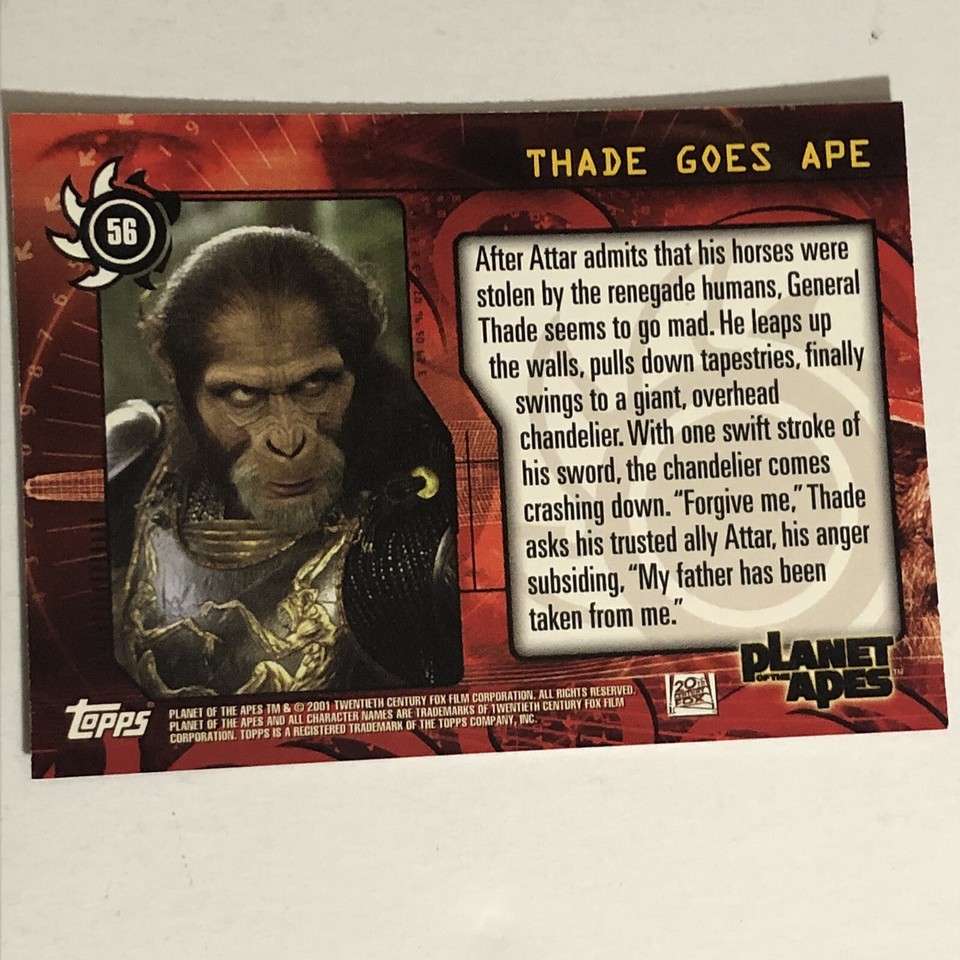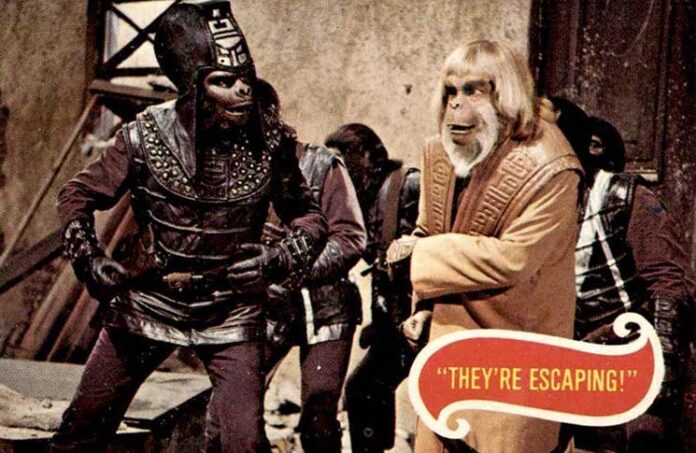Planet Of The Apes Trading Cards

Imagine a world where primates reign, where the remnants of human civilization lie scattered like forgotten toys. The year is 3978, and the simmering tension between ape and man is palpable. But it’s not just on-screen drama. It spills over into something unexpected: trading cards. These aren't just any collectibles; they're miniature portals to a revolutionary franchise, a simian saga that began long before this futuristic setting.
These Planet of the Apes trading cards, more than simple cardboard rectangles, are snapshots of a cultural phenomenon. They're echoes of a time when a sci-fi film series challenged our perceptions of humanity and evolution, capturing hearts and minds, one collectible card at a time. This article delves into the surprising world of these collectibles, exploring their history, significance, and enduring appeal.
Ape-ocalypse on Cardboard: The Genesis
The story begins in 1968 with the release of the original Planet of the Apes film. This groundbreaking movie, based on Pierre Boulle's novel, captivated audiences with its thought-provoking themes and stunning visual effects. Of course, merchandise soon followed, including the first sets of trading cards.
These initial cards weren't just promotional materials. They were miniature artworks, featuring stills from the film, behind-the-scenes shots, and character portraits. Released by companies like Topps, they allowed fans to own a tangible piece of the Planet of the Apes universe.
The cards' popularity was immediate. Children and adults alike eagerly collected them, trading duplicates and striving to complete their sets. The cards became a social currency, a way to connect with other fans and share their passion for the franchise.
Evolution of the Collection: From Film to TV
The success of the original film spawned a franchise, including sequels, a television series, and an animated show. Each new installment brought with it a fresh wave of trading cards, reflecting the evolving storyline and characters.
The trading card designs evolved as well. Later sets incorporated more vibrant colors, dynamic action shots, and even special features like stickers and puzzles. These additions enhanced the collecting experience and made the cards even more desirable.
One notable set was released in conjunction with the short-lived 1974 live-action television series, Planet of the Apes. Although the show only lasted for 14 episodes, the cards offer a glimpse into this lesser-known chapter of the franchise. They are also highly sought after by collectors.
The Topps Legacy
Topps, a name synonymous with trading cards, played a significant role in the Planet of the Apes phenomenon. Their cards were widely distributed and instantly recognizable. These cards feature the iconic Topps logo and distinctive design elements.
Topps didn't just stick to basic cards either. They also released stickers and other related collectibles, further expanding the Planet of the Apes trading card universe. Their contributions solidified the franchise's place in pop culture history.
Collectors often seek out Topps Planet of the Apes cards specifically. Topps cards are because of their quality and historical significance.
The Allure of the Chase: Rarity and Value
Like any collectible market, the value of Planet of the Apes trading cards varies greatly. Condition, rarity, and demand are all factors that influence their worth.
Cards featuring key characters, such as Cornelius, Zira, and Dr. Zaius, tend to be more valuable. Cards in pristine condition, graded by reputable companies like PSA or Beckett, command higher prices.
Error cards, those with misprints or other imperfections, can also be highly sought after by collectors. These anomalies add an element of intrigue and uniqueness to the collecting experience.
Beyond the Cardboard: The Enduring Impact
The significance of Planet of the Apes trading cards extends beyond their monetary value. They're a testament to the enduring power of the franchise and its ability to connect with audiences across generations.
For many, these cards are nostalgic reminders of childhood. They evoke memories of eagerly ripping open packs, trading with friends, and immersing themselves in the world of talking apes and oppressed humans.
"These cards aren't just pieces of cardboard; they're portals to another world, a world that challenges our assumptions about humanity and our place in the universe," says a longtime collector.
The cards also serve as historical artifacts, reflecting the cultural anxieties and social commentary that made the original film so impactful. The themes of prejudice, power, and environmental destruction continue to resonate today.
Collecting in the Digital Age
Even in the age of digital collectibles, the appeal of physical Planet of the Apes trading cards remains strong. Online marketplaces and social media groups have made it easier than ever for collectors to connect, trade, and share their passion.
Digital trading card platforms have also emerged, offering a new way to collect and display Planet of the Apes memorabilia. However, many purists still prefer the tangible feel and historical authenticity of the original cardboard cards.
The blend of old and new ensures that the Planet of the Apes trading card hobby will continue to thrive for years to come.
Apes Together, Strong: The Community
The Planet of the Apes trading card community is a vibrant and welcoming group of enthusiasts. Collectors share tips, trade cards, and celebrate their shared love of the franchise.
Online forums, social media groups, and conventions provide opportunities for collectors to connect in person and forge lasting friendships. The sense of community is a key part of the hobby's appeal.
Whether you're a seasoned collector or a curious newcomer, the Planet of the Apes trading card community is ready to welcome you with open arms.
Looking Back, Looking Forward
The Planet of the Apes trading cards are more than just collectibles; they're miniature time capsules, preserving a piece of pop culture history. They remind us of a time when science fiction challenged our perceptions of reality and sparked important conversations about society.
As new Planet of the Apes films and television shows are released, the trading card legacy will undoubtedly continue. New generations of fans will discover the thrill of collecting these iconic cards, ensuring that the franchise's impact endures for years to come.
So, the next time you stumble upon a Planet of the Apes trading card, take a moment to appreciate its significance. It's a small piece of cardboard, but it represents a much larger story: a story of apes, humans, and the enduring power of imagination.

